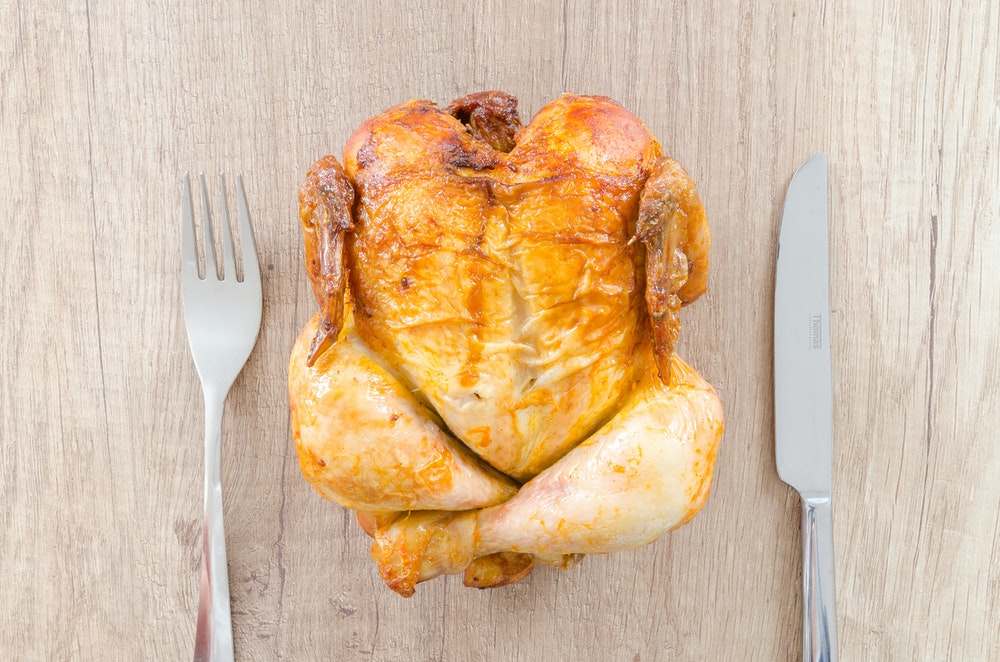Delaware’s largest agricultural sector has long been poultry, with 650 poultry farmers in Delaware employing thousands of workers and a GDP of $3.5 billion in 2019.
When the State of Delaware shut down to minimize the spread of COVID-19 in March, the majority of the state’s cases were in New Castle County, with clusters in Newark and New Castle. By mid-April, the state’s hotspot had changed, with a surge of cases in Sussex County — many of them connected to poultry processing plants like Purdue’s Georgetown plant.
Today, says Holly Porter, the executive director of trade association Delmarva Poultry Industry, Inc., Delaware’s poultry industry is starting to see a light at the end of a tunnel that has included a supply chain severely disrupted by illness, fear and closed restaurants.
Porter, along with Richard Wilkins, president of the Delaware Farm Bureau, spoke on Tuesday about Delaware’s food supply chain and COVID-19, in a webinar hosted by the Delaware State Chamber of Commerce.
The disruption “happened in phases,” said Porter. “The first is the break in the food supply chain: Food companies lost 50% of their marketplace when restaurants and schools shut down.”
Once that break in the supply chain happened, several phases followed:
- The industry saw an increase in absenteeism in plants even before they had known cases. “Schools and daycares closed, some had family that was sick, some were simply scared,” said Porter.
- That led to what she called “phase 2.5,” the last-resort decision to depopulate — aka “humanely kill” — 2 million birds due to backups on the farms. “Any other time we would have looked at another plant such as a rendering [pet food] plant. Unfortunately, all companies were feeling the same pressures.” Since then, adjustments have been made to avoid further waste.
- At the end of March, plants started to see positive cases. Safety measures based on CDC recommendations ramped up — “additional cleaning and sanitation, face masks shields, social distancing in break rooms, plastic dividers between work stations, heightened employee screening, taking temperatures, questionnaires.” In addition, she said, workers were offered things like paid leave and bonus pay. These measures were taken before similar federal recommendations were made on March 28.
- The current phase is the testing stage. “All processing plants have completed or will complete PCR full diagnostic testing, paid out of pocked by the companies.” Porter said. A large number of the plants’ positive cases are workers showing no symptoms. “Now that we know, they can be self quarantined,” she said, highlighting the importance of widespread testing when you’re dealing with a virus that spreads asymptomatically.
- The final phase, which the industry is approaching, is the one Porter calls the light at the end of the tunnel. “In talking to many companies, absentee numbers are decreasing. They’re nearing capacity. Demand for chicken is there. The last piece in putting the food supply chain back together is the marketplace.”

One reason the food supply chain has been so disrupted by COVID-19 closures is that the marketplace has changed drastically.
“Our system of production, packaging and distribution has evolved according to what consumers wanted,” said Delaware Farm Bureau’s Wilkins. “We’ve had a steady transition to where Americans eat more meals away from home. COVID-19, with the disruption of restaurants closing, has caused a dramatic hiccup in our system. We had developed infrastructure to deliver in a certain way, and it’s been turned upside down.”
Redistribution to grocery stores is not as simple as rerouting the trucks. It required the state’s executive branch to make emergency changes to allow for foods that had already been packaged for food service to be able to make its way through supermarket channels — something the industry got on top of in March.
“This is a trying time as an agricultural economist, when at the same time we have shortages and price inflation, farmers are being paid less,” Wilkins said. “It’s extremely frustrating and challenging when a farmer has to destroy a crop or depopulate animals.”
It doesn’t help that the ag industry was already in a recession since 2014, according to the speakers. The next concern will be the harvest of fruits and vegetables, which depends on migrant farm workers.
“We’re cautiously optimistic that by the time crops are ready, the labor force will have been able to adapt,” Wilkins said. “We are establishing guidelines for workers to be better protected and farmers to be prepared for loss of workforce.”
If there is a positive for Delaware’s ag industry coming out of the pandemic, it’s that people are becoming more connected to their food and where it comes from.
“The number of consumers that have recently realized that they can buy directly from farms has been a blessing,” said Wilkins. “[Farmers] can’t keep up with direct-to-consumer demand. We believe that in the long term, that may be a transition, and that the lessons learned will allow us to put in place food distribution systems that allow more resiliency.”







